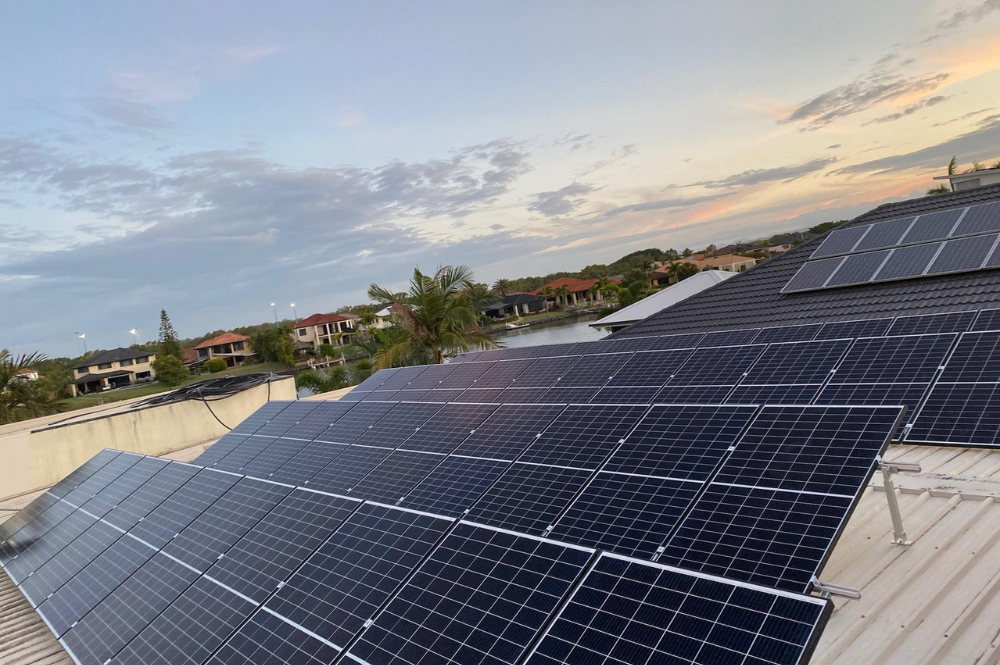Thinking about clean, renewable and cost-saving energy for your home? You’re not alone! Thanks to rebates, incentives, the cost of living and a growing concern for the environment, residential solar panel systems have become increasingly popular in the last few years. But with any significant investment, it’s normal to have questions, and seek clarity. We’ve pulled together some of the questions we get asked regularly, so you can start your journey with confidence. Let’s shed some light on the top solar FAQs.
How efficient are solar panels after 20 years?
Solar panels are built to be durable and long-lasting. Though it depends on the manufacturer and type of solar panels you’re having installed, after about 20 years, most panels retain about 80% of their original efficiency. Meaning that in 20 years, they’ve only lost about 20%. They still produce a substantial amount of electricity! The key to maintaining their efficiency is regular maintenance and monitoring. Simply keep them free from dirt, dust, and debris, and your solar panels will continue to flourish.
How many panels does a 6.6kW solar system have?
This depends on the panel wattage. Typically, however, a 6.6kW system would have between 15-20 panels. For example, if you have 440W panels, you’d need 15 panels to reach 6.6kW. Having said this, it’s important to consult with a professional installer to assess your unique circumstances, and determine the size of the system you require.
Is there a downside to having solar?
Solar power offers numerous benefits, but not everything can be controlled. Let’s consider its potential downsides, and how to address them:
- Upfront cost: It’s true that purchasing and installing a solar system comes with an upfront cost. However, various financial incentives (e.g. Small-scale Renewable Energy Scheme, Small-scale Technology Certificates, feed-in tariffs and tax incentives), loans and long-term savings often offset this initial expense. We talk more about why going solar is more affordable than you think, here.
- Intermittent production: It’s a common myth that solar panels don’t work outside of perfect weather. While solar panels do work best with direct sunlight exposure, they are designed to account for a wide range of weather conditions. On cloudy days, sunlight is still able to penetrate through the clouds and reach the solar panels. While the amount of energy generated will be lower, it’s still enough to power the panels and generate electricity. When it comes to colder weather, surprisingly to most, solar panels can actually work more efficiently. This is because cooler temperatures reduce cell resistance, which allows electrons to move more freely.
- Space requirements: Solar panels need adequate roof space, without shade or obstructions to limit their effectiveness. But there are solutions. As a solar installer, we have various strategies and alternatives available to us, to mitigate the impact of shading and still provide a viable solar solution for you.
- Maintenance: The good news is, solar systems are known for their low maintenance requirements, but like anything worth having, they do benefit from periodic checks to ensure optimal performance and longevity. Solar panels are able to be cleaned and inspected with minimal fuss.
Is there a limit as to how much solar you can have?
There’s no real limit to how much solar you can have, but it does depend on your unique circumstances and genuine needs.
- Roof space: The primary constraint for residential solar installations, is the available roof space. You can install as many panels as your roof can accommodate, but you should only install the number of panels to service your energy needs.
- Inverter capacity: The inverters capacity should match or exceed the total panel capacity. If you want more solar output, you will need a larger inverter.
- Energy needs: As mentioned, your solar system should align with your current or future energy consumption. If you have solar and you need more power, you can expand. If you are installing solar, it’s important to plan for the future, too. Is there a pool in the works? New air conditioning? An electric vehicle? Is your family growing?
- Grid connection: In some cases, grid connectivity rules can affect your system size. We look for specific regulations during our processes.
The goal is to install a system that suits your energy needs and unique circumstances.
All in all, solar power is a clean, renewable, and cost-saving energy source for your home. Even after 20 years, solar panels remain highly effective, and a 6.6kW system usually requires 15-20 panels. While there are some downsides to consider, there’s usually solutions or benefits that negate them. And, there’s no fixed limit to the amount of solar you can have, but it depends on several factors.
If you have more questions, you might like to look at our other FAQ blogs here and here.
Feel free to contact us at any time to talk on person, 1300 4 SOLAR.


Leave A Comment